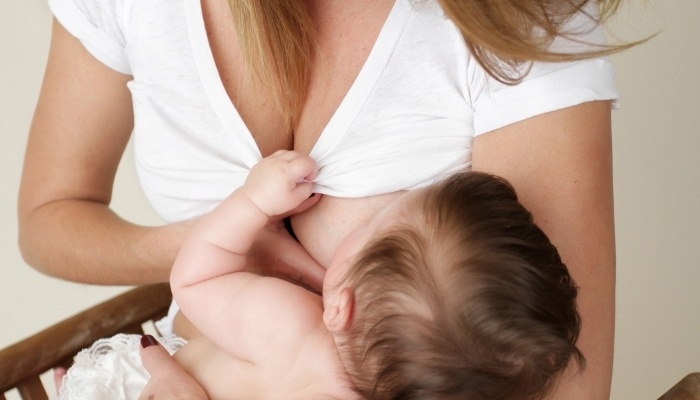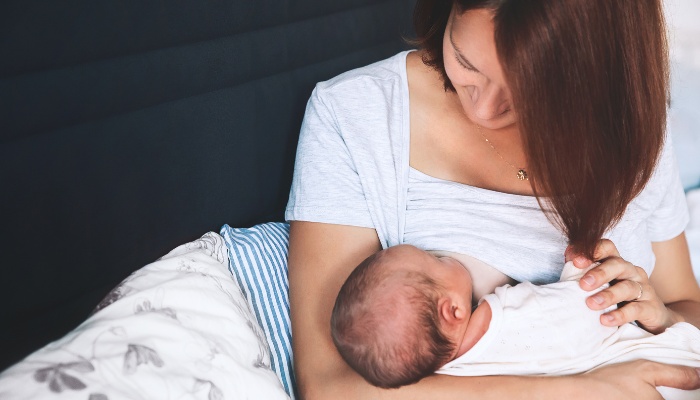Breastfeeding is a vital and inherent process that offers a multitude of advantages to both mother and child.
However, one common concern many women have about breastfeeding is that it will “ruin” their breasts and their breasts will never be the same!
There is a widespread belief that breastfeeding can lead to sagging and drooping or otherwise negatively affect the appearance of breasts. Is it true?
Breastfeeding can cause changes to your breasts. You may notice stretch marks, looser skin, and changes in size, shape, and firmness. Breastfeeding is not the only reason why breasts change. Some changes happen because of age, weight gain/loss, and pregnancy, regardless of whether you breastfeed.
In this article, we will explore the different breast changes you may notice as you breastfeed, how to care for your breasts while breastfeeding and the scientific evidence behind what causes adverse effects to your breasts.
What To Expect After Breastfeeding
Breastfeeding may not necessarily ruin your breasts, but it is very common to experience changes in your breasts while pregnant and breastfeeding.
Does Breastfeeding Make Your Breasts Sag?
One common concern about breastfeeding is that it can lead to sagging or drooping breasts.
However, numerous studies have found that breastfeeding does not have a significant impact on breast sagging.
A study published in the Aesthetic Surgery Journal found no difference in breast sagging between women who breastfed and those who did not.
So, if breastfeeding doesn’t cause breast sagging, what does? According to plastic surgeons, age, weight gain, and smoking are all significant risk factors for breast sagging.
However, pregnancy itself, regardless of whether or not a woman breastfeeds, is the leading cause of breast changes and sagging due to hormonal fluctuations and weight gain.
Do Nipples Go Back To Normal After Breastfeeding?
Some women may experience changes in nipple appearance during pregnancy and breastfeeding. These changes are often temporary and will usually resolve over time.

Possible Breast Changes To Expect
There is no doubt that your breasts will undergo some changes after breastfeeding and pregnancy. Here are some typical changes that may occur:
1. Breast Stretch Marks
It is common for some women to develop stretch marks on their breasts during pregnancy or breastfeeding.
They are caused by the rapid stretching of the skin. It’s possible that they may fade over time, but they may not completely disappear.
2. Looser Skin
Yes, it is common for the skin around the breasts to become softer and looser after breastfeeding.
During pregnancy and breastfeeding, your breasts go through significant changes, including enlargement and increased blood flow.
The stretching and expansion of the breast tissue can lead to changes in the skin’s elasticity.
After weaning, the skin may not fully regain its previous firmness due to the loss of breast volume and reduction and milk production.
3. Shift in Tissue
As mentioned previously, the breast tissue undergoes several changes during pregnancy and lactation.
As the body returns to its non-lactating state, there may be potential shifts in breast tissue including decreased fullness, loss of firmness, changes in breast shape, and lumps or unevenness.
4. Slight Sagging
Breastfeeding can stretch the ligaments and the skin supporting the breasts.
As a result, breasts may sag or droop slightly. However, it is important to note that breastfeeding itself is not the sole cause of breast sagging.
5. Change in Size
Your breast size will change multiple times throughout your pregnancy and while you are breastfeeding. When you finish breastfeeding, your breasts may even be smaller than they were before.
When I started breastfeeding my twins, I went from a size B cup to a size D. Once my supply regulated, I dropped back to a C where it stayed for the remainder of my time breastfeeding.
Once I weaned my twins and stopped breastfeeding, my cup size dropped to a smaller size than pre-pregnancy. It is wild!
The reason breasts often become smaller and may lose some of their fullness and firmness after weaning is that the milk-producing tissues shrink.
Breasts may also appear less rounded and have a more deflated appearance due to the loss of breast tissue and fat.
6. Softer Breasts
One thing I have noticed about my breasts after weaning is that they are much softer!
It sounds weird, but because the skin is stretched so much during breastfeeding, it loses elasticity and is actually softer after weaning.
Other Factors That Influence Breast Changes
While breastfeeding can take its toll on your breasts, it is not the only culprit for undesirable breast changes.
There are many other factors such as age, gaining or losing weight, genetics, and even not wearing a bra. All of these factors could result in breast changes even if you never breastfeed a child.
Breast Care During and After Breastfeeding
Taking proper care of your breasts during and after lactation is important to ensure comfort, maintain breast health, and support the transition back to a non-lactating state.
Here are some essential tips for taking care of your girls during and after breastfeeding:
1. Wean Baby Slowly
If you can, try weaning your baby gradually to allow your breasts to adjust slowly.
2. Wear a Supportive Bra
Wearing a supportive and well-fitting bra during and after breastfeeding can provide comfort, help reduce breast movement, and prevent sagging.
3. Use a Moisturizing Lotion
Using a moisturizing lotion can help to keep your skin hydrated and increase its elasticity, reducing the risk of stretch marks. Just be sure your lotion is free of harmful ingredients.
4. Drink Plenty of Water
Keeping yourself hydrated is key to good health all around, including healthy breasts! Drinking a lot of water also helps to keep the skin hydrated, which increases elasticity.
5. Do Not Smoke
Smoking can have adverse, and sometimes deadly, effects on breast tissue. It is best to avoid the practice altogether for improved health.
6. Exercise Regularly
Regular exercise helps to maintain weight, and strengthening the surrounding muscles can improve the appearance of the chest.
7. Maintain Healthy Eating Habits
Just like exercise, maintaining healthy eating habits helps to prevent weight gain, which in turn, prevents significant changes in breast tissue.
8. Practice Good Posture
Sometimes the way you carry yourself can make all the difference in how your breasts look. Sitting or standing upright can make the chest look fuller and can prevent sagging.
Final Thoughts
There you have it! While breasts certainly do undergo changes during pregnancy and even breastfeeding, the health benefits of mama’s milk for your little one make it all worth it.
Mom of three (including identical twin boys), wife, and owner of Parents Wonder. This is my place to share my journey as a mother and the helpful insights I learn along the way.

